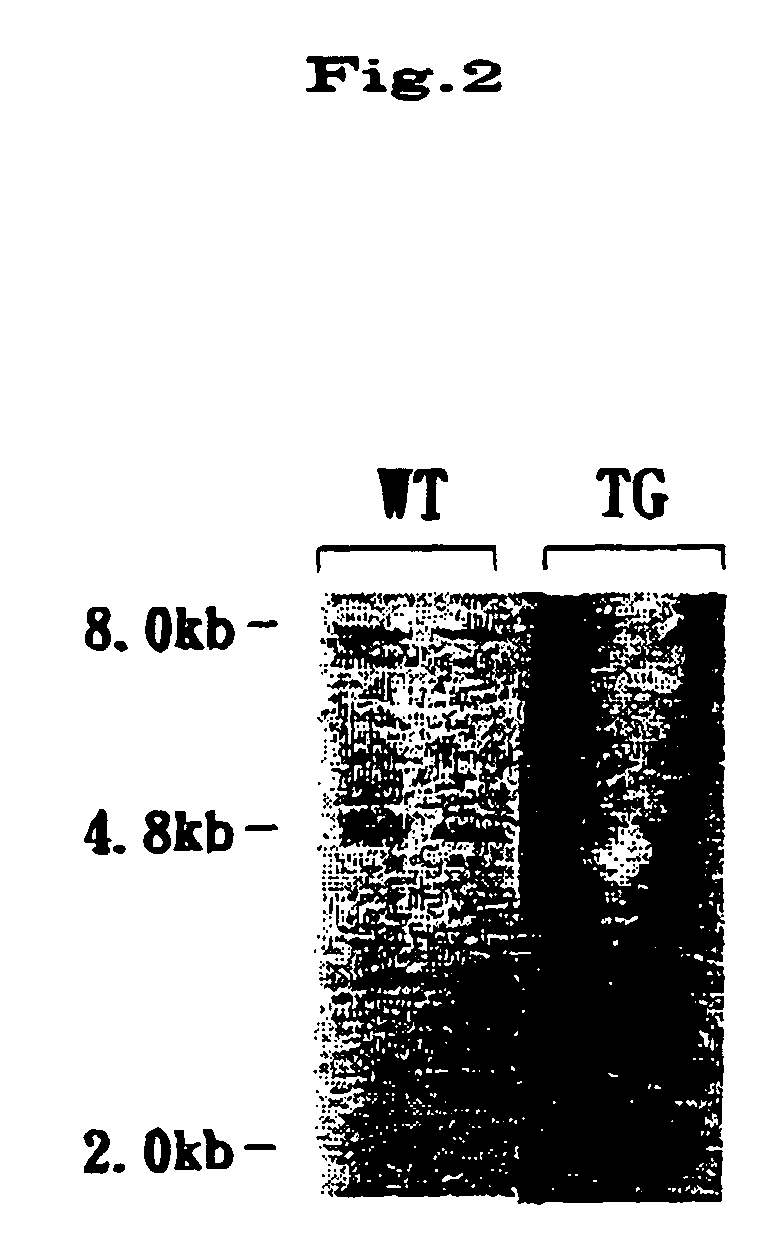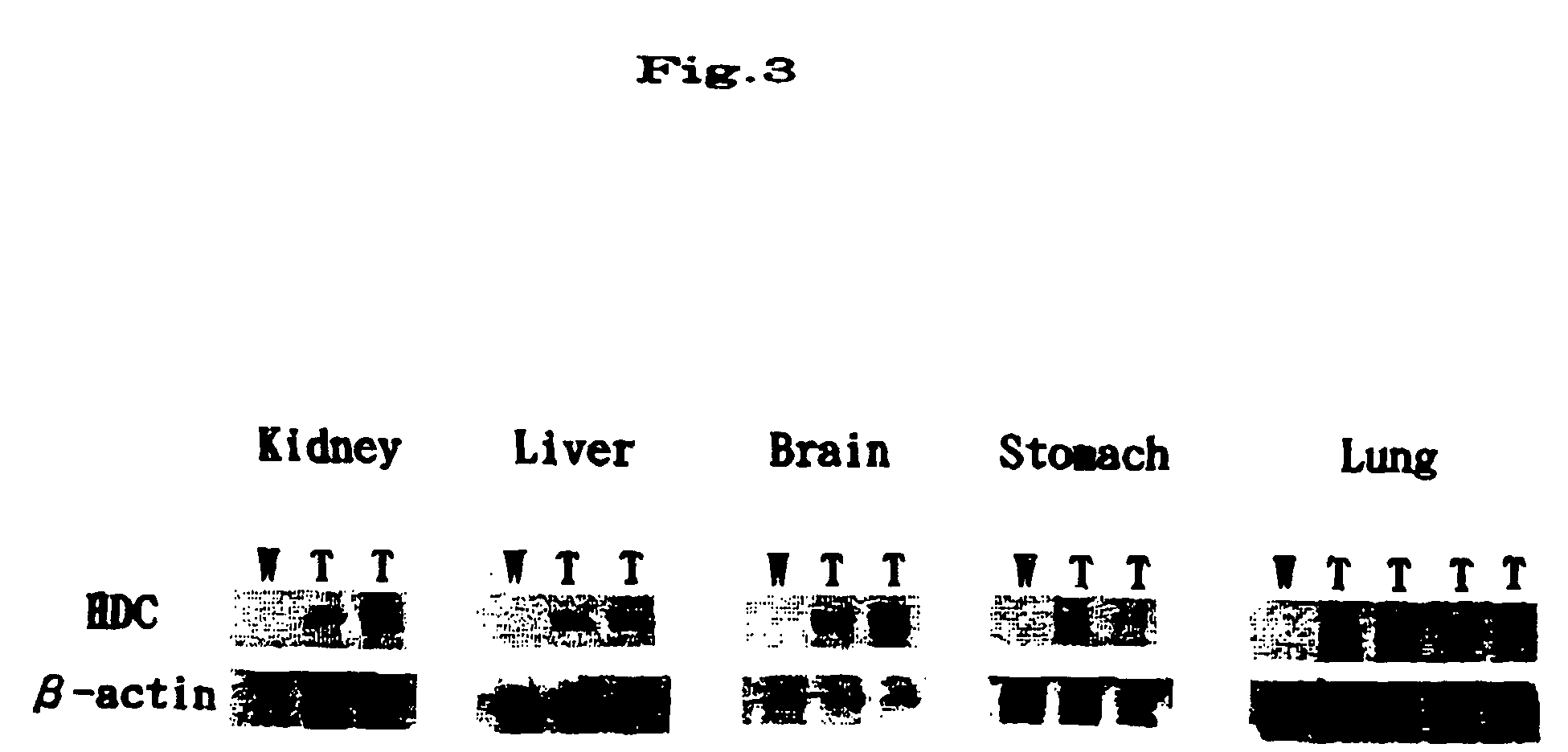Animals with high histamine productivity
a technology of histamine and animals, applied in the field of animals with high histamine production, can solve the problems of animals expressing histamine in excess, and achieve the effect of reducing the number of animals and increasing the production ra
- Summary
- Abstract
- Description
- Claims
- Application Information
AI Technical Summary
Benefits of technology
Problems solved by technology
Method used
Image
Examples
example 1
Generation of Mice with High Histamine Productivity
[0020] Using an oligonucleotide probe which was synthesized based on the cDNA sequence of murine HDC (FEBS Lett.276:214-218,1990), a murine CDNA library was screened for the murine HDC cDNA. This cDNA was inserted into a plasmid vector “pCAGGS” to construct a transgene pCAGGS-HDC (FIG. 1). In this vector, the HDC cDNA is positioned under the control of the chicken gamma-actin promoter so that it is expressed in various tissues of the transgenic mice.
[0021] The vector was digested with restriction enzymes, SalI and HindIII, to eliminate the vector backbone. The resulting linear fragment was injected into the pronuclei of fertilizd eggs of BDF1 mice by a microinjection method. The gene transferred fertilized eggs were then implanted into the oviduct of pseudo-pregnant mother in a conventional way to grow to individuals.
[0022] From the tail of the resulting mouse individual, gmnomic DNA was extracted and digested with EcoRI. Then, t...
example 2
Determination of the Amount of Histamine in the Transgenic Mice
[0024] The amount of histamine and the HDC activity were determined in several organs (cerebral cortex, midbrain, kidney, and stomach) of the transgenic mice generated in Example 1 as well as wild-type mice (Nos. 646 and 647).
[0025] The amount of histamine was determined in accordance with the known combined method consisting of high performance liquid chromatography and fluorometry (J. Chromatogr. 344: 115-123, 1985). Briefly, respective tissues were homogenized with a homogenizer, then treated with perchloric acid, and then centrifuged. An aliquot of the supernatant was separated by high performance liquid chromatography, and allowed to react with a fluorescent dye o-phthalaldehyde under alkaline conditions to determine the amount of histamine from the fluorescence intensity of the reaction product as an indicator.
[0026] The HDC activity was determined by means of the amount of histamine from histidine as substrate ...
PUM
| Property | Measurement | Unit |
|---|---|---|
| physical | aaaaa | aaaaa |
| structure | aaaaa | aaaaa |
| Northern blot analysis | aaaaa | aaaaa |
Abstract
Description
Claims
Application Information
 Login to View More
Login to View More - R&D
- Intellectual Property
- Life Sciences
- Materials
- Tech Scout
- Unparalleled Data Quality
- Higher Quality Content
- 60% Fewer Hallucinations
Browse by: Latest US Patents, China's latest patents, Technical Efficacy Thesaurus, Application Domain, Technology Topic, Popular Technical Reports.
© 2025 PatSnap. All rights reserved.Legal|Privacy policy|Modern Slavery Act Transparency Statement|Sitemap|About US| Contact US: help@patsnap.com



